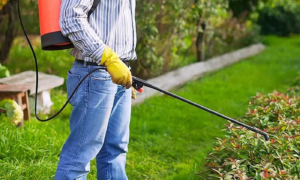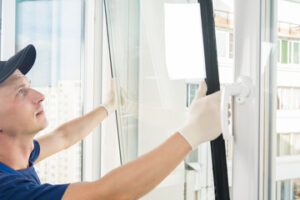Oceanside Plumbing is the system of pipes, fixtures and valves that deliver water and remove waste in residential and commercial buildings. It’s important to note that plumbing systems require regular maintenance and repairs to ensure proper function.
There are also national plumbing codes that regulate the design, installation, and inspection of plumbing systems. These codes protect public health and safety by ensuring that plumbing systems are safe and efficient.

Plumbing is the system of pipes, fixtures and other apparatus that brings clean water into buildings for consumption, and removes wastewater to maintain a hygienic environment. Plumbers are responsible for the installation, repair and maintenance of these systems to ensure they function properly.
Civilizations across the world have long recognized the importance of water in their daily lives. Without a means to transport it and remove waste, people would quickly become sick and die. As such, early civilizations developed complex systems of piping and drainage to support their communities.
Archaeological evidence shows that the ancient Egyptians used cisterns to store and transport water, while the Romans constructed extensive aqueducts to supply urban areas with clean drinking water. The Greeks also incorporated plumbing into their buildings, utilizing drains to carry waste away from public baths and private homes. Their innovations helped to improve sanitary conditions and allow for the development of cities.
In the 1800s, American and English plumbers continued to improve on their predecessors’ inventions. They patented the first flushing toilet, which helped to reduce the spread of disease by keeping sewage and waste out of drinking water supplies. In addition, they created the S-shaped pipe that kept sewer gasses from escaping up to the toilet, and invented the ballcock, an improved tank-filling mechanism still used in most modern toilets.
Today, the responsibilities of plumbers continue to evolve as building codes and environmental concerns change. For instance, the Environmental Protection Agency sets standards for safe drinking water and promotes sustainable plumbing practices by regulating the use of certain materials in plumbing systems. These regulations help to ensure that drinking water is not contaminated by harmful substances, while at the same time encouraging the use of energy-efficient appliances and fixtures.
Indoor Plumbing
While it might seem strange that people did not have indoor plumbing in their homes for much of history, it is important to remember that there are still countries and populations without access to reliable sanitation and water supply systems. Today, we take indoor plumbing for granted. It is important to understand how we got here, so that you can appreciate the modern conveniences we enjoy.
The first indoor plumbing was developed by ancient civilizations like Egypt and Rome. These early systems used aqueducts to channel water to individual homes. They also constructed rudimentary toilets that pumped waste away from the home. They disposed of this waste in sewage tunnels that were located underneath cities.
It was not until the 19th century that indoor plumbing began to make a big difference in society. At that time, cholera and typhoid were still common in big cities like New York. Then, a major breakthrough was made with the invention of cast iron pipes. These pipes were able to withstand higher pressure, and they could carry more water at a greater rate than copper. This allowed indoor plumbing to become more available, especially in wealthy homes.
In the 1830s, the White House finally had its own sewage system. This was a massive undertaking, requiring hundreds of men to jack up an entire block of buildings all at once. It is important to note that, even when we have the best plumbing systems, we still deal with problems from time to time. If you have a clogged drain, it is a good idea to call your local plumber for help.
Indoor plumbing is now a standard feature in most homes, and it is regulated by building codes to ensure safety. Modern toilets, high-quality plumbing materials, and comprehensive sewer systems make it possible to have a consistent water supply and sanitation.
Sewage Treatment Plants
In most cities sewage is collected in sewer lines and then transported to a treatment plant. In rural areas sewage is often collected in on-site septic systems. Sewage treatment plants protect public health, conserve water resources and control foul odors.
In a basic sewage treatment plant, oxygen-using bacteria break down organic materials that make up the majority of the sewage. This process is called aerobic digestion. This is a preferred method over anaerobic digestion, which uses no oxygen and breaks down materials in the absence of air. This method is less efficient, produces the characteristic septic tank odor and requires aeration to break down materials.
Most plants use mechanical surface skimmers to remove fat and grease from the sewage. This is an important step, since removing these materials helps reduce odors and ensures that the sewage is safe to discharge into surface waters.
A settling or clarification chamber is next in the sewage treatment process. Wastewater poured into the tank allows solids to settle, with heavier materials sinking to the bottom of the tank and lighter substances floating to the top. The clarified liquid then either flows or is pumped out of the facility.
Some sewage treatment plants also undergo secondary and tertiary treatments to ensure that any remaining contaminants are removed. This is becoming more common as regulatory bodies require stricter effluent limits.
Some sewage plants also have the ability to produce biosolids, which are recycled for agricultural purposes or reused as an alternative to fertilizers. This can reduce environmental contamination, as well as provide a new source of energy. However, the technology to do this is still expensive and requires a constant electricity supply, a luxury that many developing countries cannot afford.
Federal & State Regulations
The plumbing trade offers real job security, competitive pay, and opportunities to become your own boss. However, like any profession, there are rules and regulations that need to be followed to protect your customers and your business. Whether you’re a plumber, contractor or someone who chooses to DIY their renovations, following national and state rules can help prevent safety hazards and health issues.
Each state has its own requirements for becoming a licensed plumber. Some states require a license at the statewide level, while others require it on a city or local municipality level. For example, New York requires that you pass a background investigation and earn a master plumber’s license before starting work.
Other states have different licensing requirements, too. For example, Kansas doesn’t license plumbing professionals at the state level, but rather requires that individual cities and counties do so. Each city has its own licensing process, and each requires different minimum work experience levels to be eligible for licensure.
For instance, in Minneapolis, you must pass a background investigation and earn a plumbing professional’s license before you can start working. You must also complete a minimum of nine months and 1,500 hours of on-the-job experience as an apprentice, journeyman, or master plumber. The hours you spend in each of these roles must be verified through documentation, and you must pass a technical and a business and law exam.
Another example is South Carolina, which licenses plumbers on both a statewide and city or county level. Its statewide licensing process oversees commercial and residential contractors, while its city and county level licensing processes regulates apprentices, journeymen, and master plumbers. These separate processes may make it difficult for a plumber to transfer from one region of the state to another.
The Future of Plumbing
As the industry continues to evolve, it will be critical for plumbing companies to embrace new technologies and sustainable practices. These trends will drive future success and allow businesses to meet customer demands.
Innovative plumbing technology aims to reduce energy consumption, improve water efficiency, and enhance user convenience. For example, IoT-enabled devices like smart showers and toilets enable homeowners to monitor their water usage and receive alerts when they detect leaks. These systems promote sustainability and align with the growing demand for smarter home solutions.
The plumbing industry is also making a push to address the labor shortage by increasing investment in vocational education and highlighting the range of career options available to skilled workers. This will help dispel outdated perceptions of the profession and attract a more diverse workforce.
Modern technology is also transforming the way plumbers interact with their customers. For instance, automated text messaging helps streamline communications and ensures that customers are aware of their scheduled appointments. It also allows them to book services, download invoices, and make payments on the go. In addition, AI-powered virtual assistants can help reduce waiting times and simplify complex inquiries.
Despite its many advantages, the plumbing industry still faces obstacles. The stigma surrounding it contributes to a lack of qualified candidates and drives labor shortages. It’s time for industry pioneers and policymakers to unite to tackle this issue and create a positive perception of the trade.
The essence of life—water—relies heavily on the skills of plumbing professionals. From the basics of installation to advanced solutions, these individuals are responsible for ensuring its safe and effective flow. By embracing new innovations and adopting sustainable practices, the future of plumbing looks promising.








